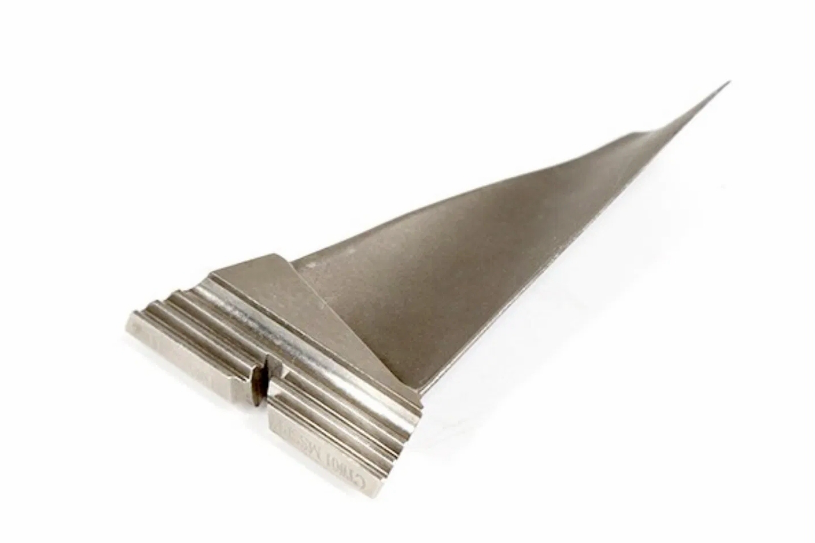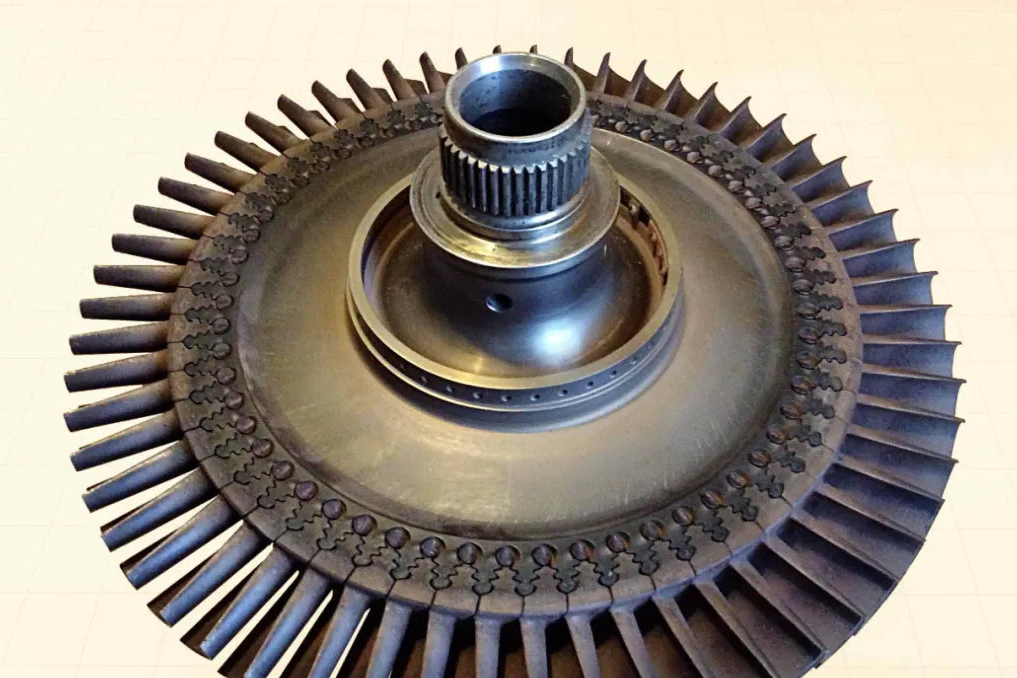Powder Preparation for Consistent Superalloy Parts Microstructure
The quality of superalloy components heavily depends on the consistency and integrity of their microstructure. For manufacturers producing parts for aerospace, power generation, oil and gas, or other industries that demand superior performance, preparing superalloy powders is critical to achieving optimal microstructural properties. The entire production chain, from powder preparation to part manufacturing, is crucial in ensuring the consistent mechanical performance of high-temperature components. This blog explores the powder preparation process, the key factors affecting powder quality, its influence on manufacturing methods, the importance of microstructural consistency, testing, quality control, and the industry applications of superalloy parts.

Powder Preparation Process
The preparation of superalloy powders involves a series of controlled processes designed to ensure consistency, quality, and properties that meet the high standards required for manufacturing. The most commonly used powder preparation techniques are Gas Atomization, Plasma Atomization, and Mechanical Milling. Each of these methods provides distinct advantages, depending on the specific requirements of the final component.
Gas Atomization is one of the most popular methods for producing high-quality superalloy powders. In this process, a high-pressure gas breaks a molten superalloy stream into fine droplets, producing spherical powder particles. Spherical powders are preferred due to their excellent flowability, packing density, and reduced porosity during sintering or additive manufacturing processes. This method is commonly used for superalloys such as Inconel, Hastelloy, and Rene series alloys, ensuring high purity and consistent particle size.
Plasma Atomization involves using plasma to melt and atomize a wire or bar feedstock into fine powder particles. The process is effective for producing powders with uniform particle size and morphology, which is particularly important for applications where the powder will be used in additive manufacturing. Plasma-atomized powders are characterized by their cleanliness, minimal inclusions, and high sphericity, making them suitable for aerospace and other high-performance industries.
Mechanical Milling is another powder preparation method used for superalloys, typically for achieving specific particle size distributions or preparing blends of different powders. The powders are ground into fine particles using high-energy ball mills in mechanical milling. This method produces highly customized powder mixtures with tailored properties, but it may result in more irregular shapes than gas or plasma atomization powders.
The powder preparation method selected directly affects the superalloy parts' final microstructure. Consistent powder quality ensures uniform microstructure, reduces the presence of defects, and enhances the overall performance of components. The properties of the powder, such as particle size distribution, morphology, and purity, will significantly influence subsequent processes, including compaction, sintering, or additive manufacturing.
Key Factors in Powder Quality
Powder quality is determined by several key factors, each of which substantially impacts the final component's microstructure, mechanical properties, and performance. Understanding these factors is critical for achieving consistency in manufacturing superalloy parts.
Particle Size Distribution is a crucial factor influencing the powder’s packing density, flowability, and sintering behavior. A narrow particle size distribution is preferred to ensure uniform compaction and reduce the risk of defects such as porosity during manufacturing. Fine powders enhance the sintering process, leading to a dense and uniform microstructure, while larger powders can be used for applications requiring higher strength.
Morphology refers to the shape of the powder particles, which can be spherical, irregular, or dendritic. Spherical powders are ideal for additive manufacturing and powder metallurgy because they exhibit better flowability and packing characteristics than irregularly shaped powders. Improved packing density reduces voids and defects, which are crucial for producing superalloy parts with consistent mechanical properties.
Powder Purity is another important consideration. The presence of impurities, such as oxides, carbides, or other contaminants, can significantly affect the final microstructure and mechanical properties of superalloy parts. For high-performance applications, maintaining powder purity is essential to prevent inclusions that can act as stress concentrators and lead to premature failure.
Powder Storage and Handling are also essential aspects of maintaining powder quality. Powders must be stored in a controlled environment to prevent contamination and oxidation. Moisture and airborne contaminants can alter the powder’s properties, leading to inconsistencies in the final part's microstructure. Proper handling and storage procedures ensure the powder retains its original characteristics throughout manufacturing.
Impact on Manufacturing Process
The preparation and quality of superalloy powders play a critical role in determining the success of subsequent manufacturing processes. Whether the powders are used in Powder Metallurgy, Additive Manufacturing, or Isostatic Pressing, their characteristics will directly influence the quality and performance of the finished component.
In Powder Metallurgy, powder consistency is key to achieving uniform compaction and minimizing defects during the sintering stage. The powders are first compacted into a mold under high pressure and then sintered at high temperature to create a solid component. If the powder size distribution or morphology is inconsistent, it can lead to voids, incomplete sintering, or inhomogeneous microstructure, resulting in weaker parts.
Additive Manufacturing has revolutionized the production of complex superalloy parts by enabling the direct creation of components layer by layer from powders. For additive manufacturing, powder flowability and consistency are crucial, affecting the printed part's layer deposition and overall quality. Powders with high sphericity and uniform particle size distribution ensure smooth flow through the powder bed and consistent layer formation, resulting in parts with excellent mechanical properties and minimal defects.
In Isostatic Pressing, superalloy powders are placed in a mold and subjected to uniform pressure from all directions. The consistency of the powder ensures homogeneous compaction, which minimizes the presence of internal defects. Properly prepared powders with uniform size and morphology improve mechanical performance and reduce post-processing requirements.
Ensuring Consistent Microstructure
Superalloy powders' characteristics directly impact the final components' microstructure. A consistent microstructure is crucial for ensuring the mechanical properties of high-temperature parts, such as strength, fatigue resistance, and thermal stability.
During the Sintering process, the characteristics of the powder—such as particle size, morphology, and purity—determine the densification and grain growth behavior. Powders with a narrow particle size distribution and high sphericity promote uniform densification, reducing the risk of porosity and resulting in a homogeneous microstructure with excellent mechanical properties.
Heat Treatment is often performed after the initial manufacturing process to optimize the microstructure and improve mechanical properties. The consistency of the powder directly affects how the material responds to heat treatment. For example, a uniform powder mixture leads to even grain boundary formation, which enhances the component's overall strength and fatigue resistance.
In solidification processes, such as casting, the morphology of the powder plays a role in the final part's quality. Powders with irregular shapes can lead to uneven packing and variable cooling rates, resulting in defects or grain boundary segregation. Spherical powders ensure a consistent solidification pattern, which leads to better mechanical performance.
Testing and Quality Control
Various testing and quality control methods ensure that superalloy powders meet the required standards for high-performance parts. These tests help characterize the powders and ensure they are suitable for critical applications.
Particle Size Analysis is used to determine the size distribution of the powder particles. Techniques like laser diffraction or sieving ensure the powder falls within the specified size range. A consistent particle size distribution is critical for ensuring uniform compaction and sintering behavior.
Flowability Testing evaluates how well the powder flows, which is particularly important for processes like additive manufacturing. Poor flowability can lead to uneven powder deposition and defects in the final part. Techniques such as the Hall Flowmeter or a rotating drum are commonly used to assess powder flow characteristics.
Chemical Analysis, such as Inductively Coupled Plasma Optical Emission Spectrometry (ICP-OES), is performed to determine the elemental composition of the powder and ensure that it meets the specified requirements. This analysis helps to identify any impurities that could compromise the mechanical properties of the final part. Trace element detection with ICP-OES is crucial for ensuring the durability and reliability of the final components.
Scanning Electron Microscopy (SEM) is used to examine the morphology and surface characteristics of the powder particles. SEM provides high-resolution images that help assess the shape, surface roughness, and presence of any contamination on the powder particles.
X-ray Diffraction (XRD) is used to analyze the crystalline structure of the powder, which can provide information about any phase transformations that may have occurred during preparation. Ensuring the powder maintains the correct phase is crucial for achieving the desired mechanical properties in the final part.
Quality control procedures are essential for maintaining consistent powder characteristics throughout manufacturing. Proper documentation, testing at multiple stages, and adherence to industry standards ensure that the powders used in superalloy manufacturing meet the highest quality standards. Manufacturers can achieve reliable performance and long-term durability in critical applications by employing these rigorous testing methods.
Industry Applications of Superalloy Powders
Superalloy parts are used in various industries where performance under extreme conditions is required. Consistent powder quality is a prerequisite for producing parts that meet these challenging environments' demands.
Aerospace
In the Aerospace and Aviation industry, superalloy powders create engine parts, turbine blades, and combustion chamber components. These parts must maintain integrity at high temperatures and pressures, making consistent microstructure and material quality critical for safety and performance. Superalloy materials such as Inconel and CMSX series are commonly employed for their ability to withstand extreme thermal stresses and oxidation in jet engines.
Power Generation
The Power Generation sector relies on superalloy powders to produce gas turbine discs, blades, and other components used in gas and steam turbines. The consistency of the powder ensures that these parts can operate efficiently for long periods without experiencing thermal fatigue or failure. Superalloy components like turbine blades and heat exchanger parts benefit from this powder consistency, ensuring optimal performance under high thermal and mechanical stresses.
Oil and Gas
In the oil and gas industry, superalloy parts are used to drill components, valves, and other high-stress applications. The uniformity of the powder microstructure is essential for these parts to withstand corrosive environments and high pressures without cracking or degradation. Superalloys such as Hastelloy and Inconel are commonly used in applications where resistance to extreme temperatures and corrosion is critical.
Medical and Automotive
The medical and automotive industries also utilize superalloy powders for additive manufacturing of specialized components. In medical implants, consistent powder quality ensures biocompatibility and durability, making superalloys a strong candidate for implants requiring long-term performance under stress. In automotive applications, superalloy parts are used for turbocharger components and exhaust valves that must withstand high temperatures and corrosive exhaust gases, ensuring durability and efficiency in modern engines.
FAQs
Why is powder quality so important for the production of superalloy components?
What are the key methods for producing superalloy powders and their advantages?
How does powder morphology affect the final properties of superalloy parts?
What testing methods are used to ensure the quality of superalloy powders?
How does powder consistency impact additive manufacturing of superalloy components?



